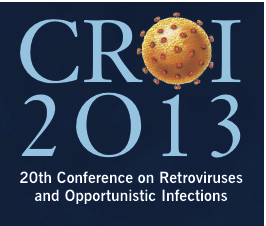Further studies on how male circumcision may reduce HIV transmission
1 April 2013. Related: Conference reports, HIV prevention and transmission, CROI 20 (Retrovirus) 2013.
Simon Collins, HIV i-Base
 Two posters at CROI 2013 reported different potential mechanisms for why circumcision reduces the risk of HIV heterosexual acquisition compared to uncircumcised men.
Two posters at CROI 2013 reported different potential mechanisms for why circumcision reduces the risk of HIV heterosexual acquisition compared to uncircumcised men.
An understanding of the mechanism may allow alternatives to circumcision that mimic the circumstances and potentially offer a similar protection.
Minh Dinh and colleagues from Northwestern University, Chicago have presented research in this area for several years. Initial studies suggested this was related to a combination of greater numbers of target immune cells and a thinner keratin layer in the inner foreskin. However, this was superseded last year with new data reporting that the penis glans (rather than inner foreskin) of uncircumcised men had higher concentrations of CD4 cells that were also closer to the surface membrane.
This year, the same group presented a new study looking at moisture-related differences to the skin following circumcision by measuring cell capacitance (relating to moisture content) and trans epithelial water loss (TEWL) which correlates with decreased skin barrier function.
The study included non-invasive measures to compare ten men who had been circumcised in childhood, ten who had recent elected circumcision and ten uncircumcised men. In a related animal study, tissue biopsies were taken from ten male rhesus macaques that were circumcised and followed for 12 months.
The group reported that skin barrier function was significantly reduced in the uncircumcised glans and inner foreskin as compared to the circumcised glans or shaft tissue (mean uncircumcised vs circumcised glans was 100.34 vs 43.60 g/m2h, p <0.001, inner foreskin = 97.05, shaft = 43.05).
In explanted foreskin tissues, the inner foreskin was more permeable to tritiated water than the outer foreskin. In the macaques, TEWL decreased and skin capacitance increased over time after circumcision. This correlated to qualitative changes in the expression of filaggrin and E-cadherin from serial biopsies.
A second poster presented by Cindy Lui and colleagues looked at different microbes on the penis head by circumcision status. [2]
This was a prospective study that randomised 156 men in Rakai, Uganda to early (immediate) circumcision or deferred (for 24 months) circumcision.
Swabs taken from the coronal sulcus (the underside ridge where the penis head joins the shaft) at baseline and at 12 months measured bacterial activity using 16S rRNA gene-based quantitative real-time PCR and pyrosequencing analysis.
At baseline, men in each group had comparable total bacterial load and microbiota composition but this was significantly different 12 months after circumcision, with no changes seen in the deferred control group.
Circumcision significantly decreased the prevalence of 15 bacteria at the coronal sulcus, 12 of which are anaerobic bacteria and increased the prevalence of aerobic and facultative anaerobic bacteria. Circumcision also reduced the biodiversity, producing a microbiota that also had fewer dominant bacterial groups. The decreases in anaerobic bacterial load (–1157 to –25,327 16S rRNA gene copies) were greater than the corresponding increases in aerobic and facultative anaerobic bacteria (+8 to +2857 16S rRNA gene copies).
Although both anaerobic bacteria are not well studied in the male urogenital tract they are known to have pro-inflammatory capabilities and this may warrant further assessment. However, although these changes were significant they were not universal,indicating that environmental or host factors may play a role on the microbial effects of male circumcision.
Comment
Further details of the study by Lui et al are in the full paper that has recently been published online as an open access article. [3]
References:
- Dinh M et al. Enhanced Penile Skin Barrier Function in Circumcised Men and Implications of HIV Transmission. 20th CROI, 3-6 March 2013, Atlanta. Poster abstract 345.
http://www.retroconference.org/2013b/Abstracts8888/47790.htm - Lui C et al. The impact of male circumcision on the penis microbiome: analyses from Rakai,Uganda. 20th CROI, 3-6 March 2013, Atlanta. Poster abstract 344.
http://www.retroconference.org/2013b/Abstracts8888/45950.htm - Lui C et al. Male Circumcision Significantly Reduces Prevalence and Load of Genital Anaerobic Bacteria. mBio vol. 4 no. 2. (16 April 2013 ). doi: 10.1128/mBio.00076-13
http://mbio.asm.org/content/4/2/e00076-13.full

